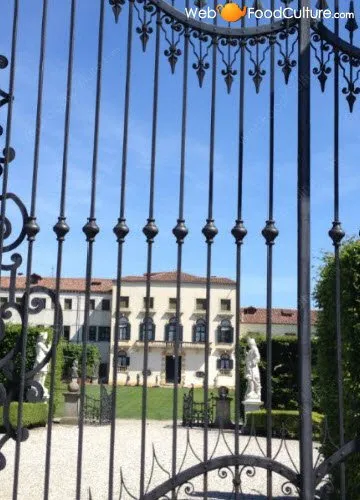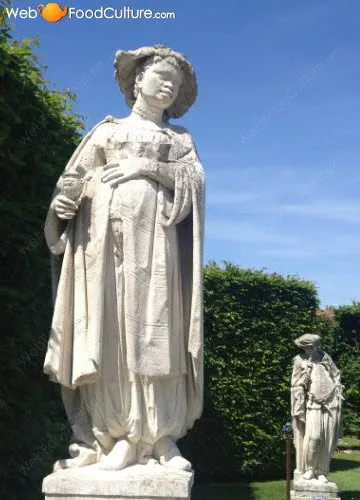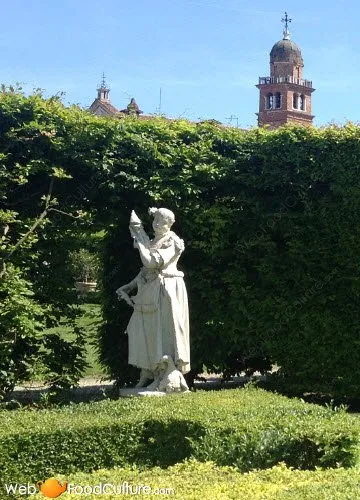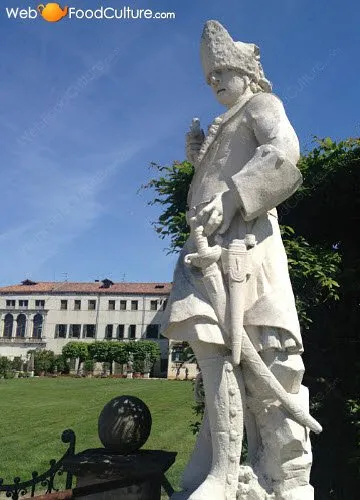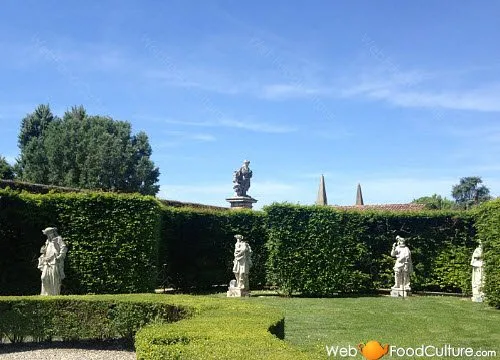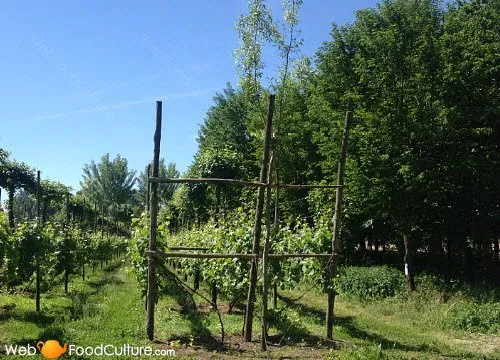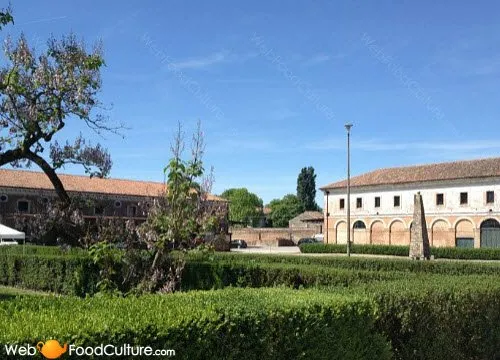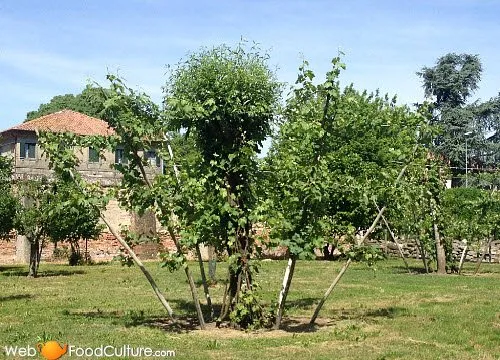Published:
Author: Antonio Maria Guerra
Friularo Wine

There is a place where emotions from a time past, art, culture and taste, seem to blend. A beautiful, ancient villa in the Italian countryside becomes the source of feelings that inevitably ignite inspiration. It’s not a coincidence that the Friularo wine was born in the local vineyards, the fruit of a millenary tradition.

Friularo wine: a rough wine with a great temper.
Friularo wine has always been famous for its strong personality: something to keep in mind when drinking it. There are no certainties about the origins of its name: it probably comes from ‘frigolearo’, a dialect word combining ‘frigo’, referring to the late harvest of the grapes, and ‘aro’, referring to the hard work of plowing the fields. These elements give life to a harsh and fiery red, celebrated by the Italian poet ‘Ruzante’: for him, this wine was ‘sgarboso’ (rude), not easy to befriend.
Bagnoli, the birthplace of Friularo wine.
Friularo wine is produced in the lands surrounding the Municipality of Bagnoli, located in the Italian region of Veneto, not far from the city of Padua.


The history of Friularo wine.
The ‘Dominio di Bagnoli’ is the land surrounding the beautiful Villa Widmann, in the Northeast of Italy. It’s one of the best places to grow the Friularo grapes: this should not surprise since it’s right in the middle of a territory with a millenary tradition in the production of wine.
The beginning.
Although it’s very likely that the Ancient Romans grew vines in this zone, the first document proving the existence of this type of cultivation in the area, dates back to 954 A.D., when Almerico, Duke of Lombardy, donated the Dominio to the Church. In the XIII Century, a group of Benedictine monks built a monastery including a wine cellar.
Friularo wine served at the Ducal Palace of Venice. At the beginning of the XVII Century, the ‘Friularo di Bagnoli’ acquired so much prestige to be adopted as the official wine of the Venetian Republic: it was served at the Ducal Palace and in every embassy of the ‘Serenissima’.
At the beginning of the XVII Century, the ‘Friularo di Bagnoli’ acquired so much prestige to be adopted as the official wine of the Venetian Republic: it was served at the Ducal Palace and in every embassy of the ‘Serenissima’.
So, it’s probably not a coincidence that in this period the Dominio belonged to one of the most important Venetian families of the time: the Widmann-Rezzonico.
Napoleon.
The advent of Napoleon put an end to the ‘golden age’ of the Friularo: the Venetian aristocracy started to drink French wines.
Read more
When at the end of the XIX Century the Borletti family bought the Dominio, the Friularo was at its lowest level of popularity. Lorenzo Borletti began to manage the vineyards in 1990: he immediately tried to bring the wine back to its former glory. To reach the highest level of quality possible, he decreased the quantity produced from three million liters to three hundred thousand. His choice was right: in a few years, the Friularo received many awards and the DOCG label. .

Friularo wine
THE MOST TRADITIONAL PRODUCER
This article is the result of collaboration between WebFoodCulture and Dominio di Bagnoli, the most traditional producer of Friularo wine.


The land of Friularo wine.
The Friularo vineyards grow in the North East of Italy, in a zone not distant from the city of Padua. Here, the soil is influenced by the volcanic nature of the Euganean Hills and by the sediments left during the centuries by the rivers Adige, Brenta and Bacchiglione. These factors increase the minerality, the acidity and the sapidity of the wine.
Read more
The local climate is very important too: it’s never too hot or too cold. A gentle breeze coming from the heights reduces the risks due to humidity. A good thermal excursion during the period of maturation increases the presence of phenolic substances, giving to the Friularo grapes their typical deep red color.

Villa Widmann: Friularo's Villa.
In 1656 Count Widmann bought the Dominio di Bagnoli from Pope Alexander VII. A few years later he ordered the construction of a villa, entrusting the project to the famous architect Baldassarre Longhena (*1). The task assigned to Longhena was not just to design the main building (*2), but also renovate the structures (warehouses, barns and cellars) once belonged to the Benedictine monks. Thanks to his work, the Dominio became one of the most modern farms of the time.
Nowadays Villa Widmann is classified as National Monument and considered one of the most significant architectural and historical attractions of the Veneto region.
Notes:
*1: The architect Baldassarre Longhena is famous for the design of Cà Rezzonico, the ‘Basilica della Salute’, and the Widmann Palace, all located in Venice.
*2: Longhena designed also a small theatre inside the main building (later used by Carlo Goldoni), and a little church adjacent to the structure.

Friularo wine and the world of Goldoni.
It’s not possible to fully appreciate the Friularo without knowing the place where it comes from.
Read more
This place is Veneto, a Region located in the Northeast of Italy, famous worldwide for its most precious gem: the city of Venice. A specific historical period is also very important to understand this wine: the XVIII Century, widely considered its ‘golden age’.
If visiting Veneto should be relatively simple, the same cannot be said about traveling to the past: it would be the right job for a time machine, but since it has not been invented yet, it’s necessary to find another way.
The best could be to read the plays written by a frequent visitor of the Dominio di Bagnoli: Carlo Goldoni. Many of the works of this great Italian playwright can bring the reader to the right place at the right moment: the Venetian Republic of the 700’s.
Goldoni describes so carefully the world of the Friularo wine to make it live again.

Friularo wine and literature.
In 1521, the Venetian writer and playwright Angelo Beolco, also known as ‘Il Ruzante’, wrote in his ‘Prima Orazione’:
Read more
“Pan meglio che fugasse e biscotti. E qual’elo el poltron che no magnarave quatro par far merenda? Mo quel vino sgarboso an? Vin che dise ‘bevime … bevime’ che el te salta dal bocal, vin proprio da resusitar i morti malai, e anca chi gavesse sento ferìe, nol ghe farae mal, vin che fa pair (digerire) le piere! Dove nasselo sto vin? Nel Pavan!”.
The ‘rude wine’ (‘vino sgarboso’) produced in the surroundings of Padova was almost certainly the Friularo.

The garden, the ‘brolo’ and the Friularo vineyards.
The Villa in Bagnoli is undoubtedly a small gem, embellishing the area where the Friularo wine is produced. What strikes the visitor is not just the beauty of the main building, but also that of its garden, adorned by a great number of statues created in the late Seventeenth Century by the Venetian sculptor Antonio Bonazza.
The great part of these statues represents some of the most famous characters of the theatrical genre known as ‘Commedia dell’Arte’.
Near the garden, there is a medieval ‘brolo’: a parcel dedicated to high-value crops. Although its presence was quite common in many Venetian villas of the past, very few examples have survived, even less so well preserved. In the brolo, vines are still cultivated using ancient techniques in large part abandoned, such as the ‘Cassone Padovano’ and the ‘Festonato’. This beautiful place is surrounded by many acres where the Friularo grapes are grown.

Friularo wine: best pairings.
Friularo wine is warm, tannic, fresh and tasty. It’s perfect to accompany, for example, medium-long aged cheeses and recipes like the ‘brasato’ (braised meat).
Read more
- Its alcohol and the tannicity balance the succulence (induced) of the meat and the greasiness of its sauce;
- Its acidity balances the sweet tendency of the ‘brasato’;
Friularo wine is also produced in a ‘passito’ version, in this case it’s sweet, fresh, warm and tannic. It’s perfect with some of the most typical Venetian biscuits, like the ‘zaetti’:
- Its sweetness, eased by the acidity, balances that of the biscuits;
- Its alcohol and tannicity balance the (induced) succulence of ‘zaetti’.

Dominio di Bagnoli: contacts.
Address: Tenuta di Proprietà Borletti P.za Marconi 63 – Bagnoli di Sopra 35023, Padova
Website: www.ildominiodibagnoli.it
Mail: info@ildominiodibagnoli.it
Tel.: +39 049 5380008

Copyright information.
The images displayed in this page belong to WebFoodCulture and to Dominio di Bagnoli, with the exception of:
Public Domain images:
- Portrait of Angelo Beolco, ‘Il Ruzzante’, G.F. Tomasini, 1630 (Wikipedia Link) {PD-Art} {PD-US}
Creative Commons images:
- Portrait of Carlo Goldoni, Alessandro Longhi, 1757 Collezione Palazzo Centani (Wikipedia Link) {PD-Art} {PD-US}

